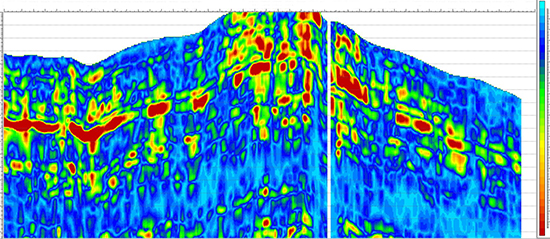Characterize Fractures and Stress with Anisotropic Inversion
Paris, France | May 31, 2016
New software capabilities provide more information for fuller reservoir understanding
Selecting the best drilling locations in all types of reservoirs depends on successfully tackling complex subsurface challenges. To address the tough technical issues involved, CGG GeoSoftware has launched the latest version of its Jason 9.5 advanced reservoir characterization software. Many new capabilities for anisotropic inversion, depth inversion and broadband reservoir characterization build on and improve Jason’s unique technology that reveals essential reservoir facies and rock property information.
In naturally fractured reservoirs, better identification of fractures, differential stress and reservoir architecture is key to improving drilling and production results. Jason-patented workflows improve characterization of reservoirs with significant anisotropy and realize the full value of azimuthal seismic data.
Within the Jason® solution portfolio, Anisotropic Inversion offers more options for improved anisotropy property estimates calibrated to well control. Now you can analyze anisotropic behavior of the rocks using your pre-stack isotropic modeling and inversion. In bandlimited seismic data, the Jason technique allows you to calculate azimuthally-sectored trend models based on the analysis of a first-pass inversion.
Producing better information on anisotropy magnitude and direction is helpful to a fuller understanding of the reservoir. Large-scale fractures may be visible on regular 3D seismic data and can be seen with seismic attributes like coherency and curvature and with the GeoSoftware product, FaultFractureSpark. However, smaller sub-seismic fractures and stress manifest themselves at seismic scale through anisotropy. By studying the azimuthal behavior of the reflections in wide-azimuth data you can characterize their orientation and intensity.
Within Jason, CGG GeoSoftware has implemented a method to calculate the effective elastic parameters in any azimuthal direction. With these effective elastic parameters and isotropic AVO modeling, you can accurately predict the azimuthal seismic amplitude behavior as a function of angle or offset. Moreover, as the character of the azimuthal bias in the inverted elastic parameters is known, these can be analyzed in a special tool that performs a regression to the predicted azimuthal behavior of the elastic properties from azimuthally-sectored pre-stack inversions.
Failure to account for anisotropy results in incorrect amplitude of estimated wavelets, especially on far offsets; biased estimates of elastic parameters; and inversions that do not match well control. The impact is strongest on the density. Fortunately, the technically sophisticated geoscience technology within Jason can help avoid this situation.
To help you find out more about how these innovative techniques can help with tough drilling and reservoir development decisions, CGG GeoSoftware is offering daily presentations and demos on demand on EAGE booth #1250.
